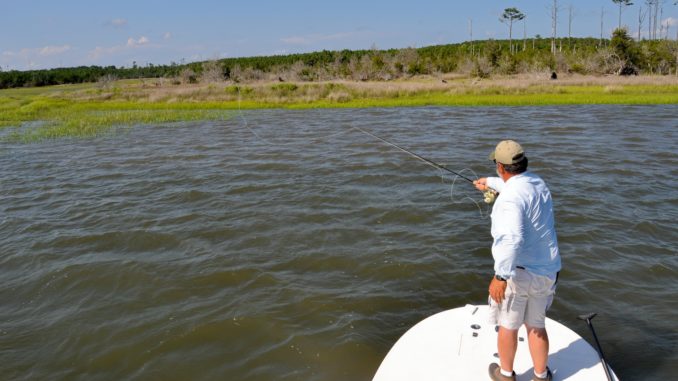
Outstanding places to find red drum in shallow waters along North Carolina’s coast are disappearing, much to the consternation and puzzlement of guide Joe Shute of Atlantic Beach.
The deep holes and creeks that once meandered through marshes — sanctuaries for many species of fish and flats-boat fishing — are losing a battle with migrating sand, making access difficult, even with skiffs that draw only inches of water.
“It’s happening in the Haystacks,” Shute said, referring to a vast marsh just west of Morehead City. “I don’t know if dredging is causing it or it’s a natural flow of sand, but the Haystacks once were a great place for red drum and other fish,” Shute said. “In the last four or five (years), many of the places in there have filled in with sand. Fishing time is shorter, and open holes in the spartina grass are going away.
“I had three or four places I could go in the Haystacks and find red drum, and now I can’t reach many of them. There also were big, open ponds in there that are filling up.”
As the tide falls about halfway out of the Haystacks, sandbars block entrances to once-fishable creeks and open bays. At full low tide, the tops of sand and spartina islands are 3 1/2 feet above the water level.
“The sand builds up these islands, then the spartina grass grows on it,” Shute said.
Many sandbars on the marsh’s periphery and some inside the Haystacks have become picnic areas for tourists, who beach their boats, set up umbrellas, beach chairs, bring out coolers and watch their children play in the water.



